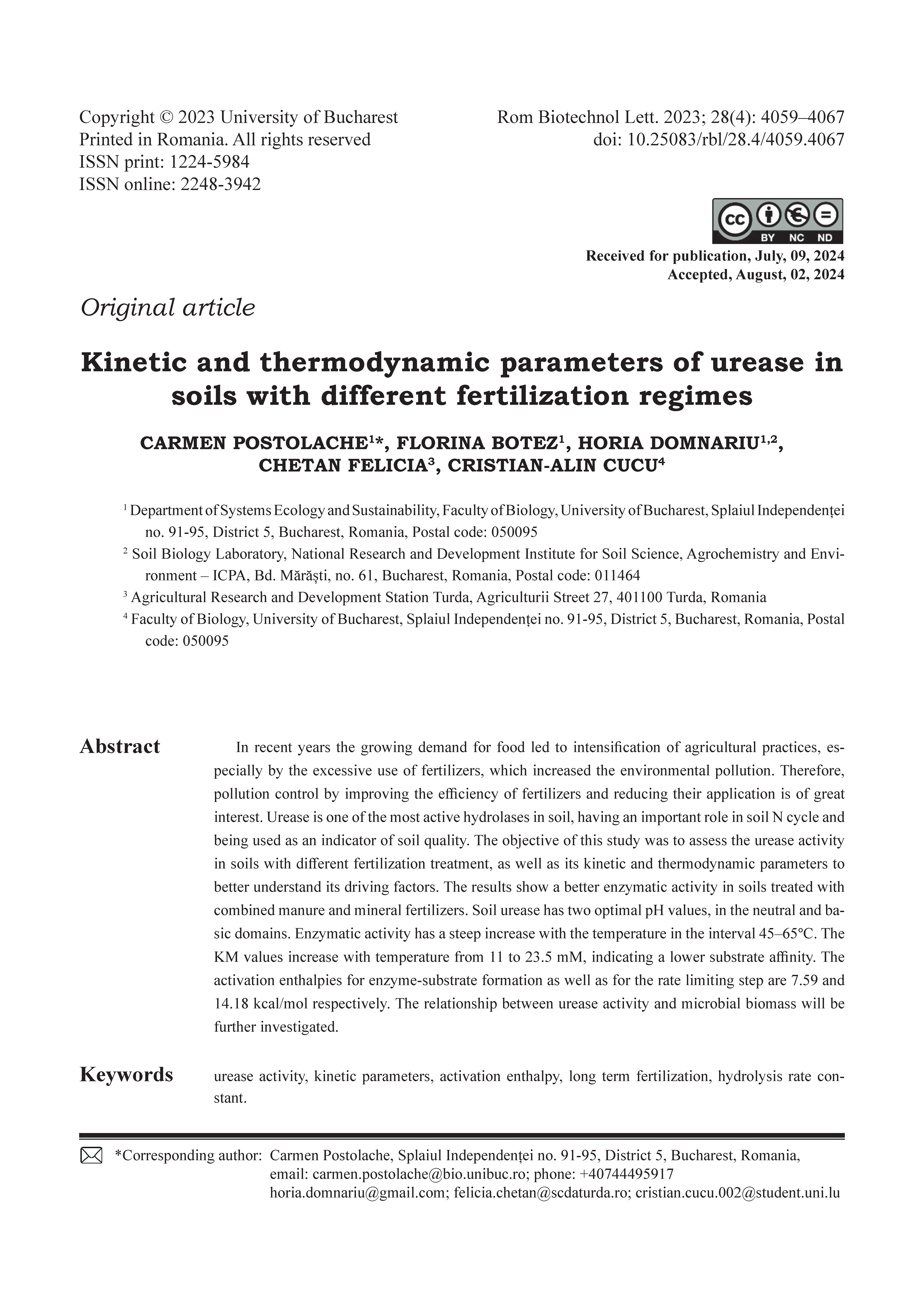Kinetic and thermodynamic parameters of urease in soils with different fertilization regimes
DOI:
https://doi.org/10.25083/rbl/28.4/4059.4067Keywords:
urease activity, kinetic parameters, activation enthalpy, long term fertilization, hydrolysis rate constantAbstract
In recent years the growing demand for food led to intensification of agricultural practices, especially by the excessive use of fertilizers, which increased the environmental pollution. Therefore, pollution control by improving the efficiency of fertilizers and reducing their application is of great interest. Urease is one of the most active hydrolases in soil, having an important role in soil N cycle and being used as an indicator of soil quality. The objective of this study was to assess the urease activity in soils with different fertilization treatment, as well as its kinetic and thermodynamic parameters to better understand its driving factors. The results show a better enzymatic activity in soils treated with combined manure and mineral fertilizers. Soil urease has two optimal pH values, in the neutral and basic domains. Enzymatic activity has a steep increase with the temperature in the interval 45–65°C. The KM values increase with temperature from 11 to 23.5 mM, indicating a lower substrate affinity. The activation enthalpies for enzyme-substrate formation as well as for the rate limiting step are 7.59 and 14.18 kcal/mol respectively. The relationship between urease activity and microbial biomass will be further investigated.




